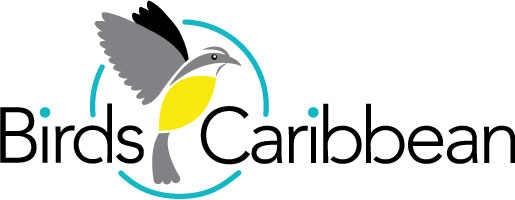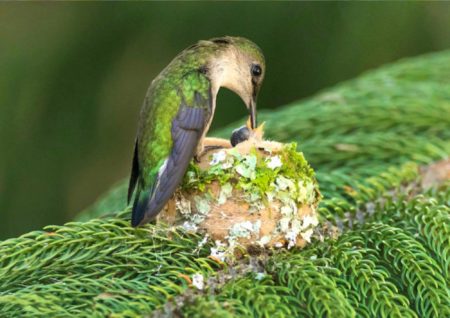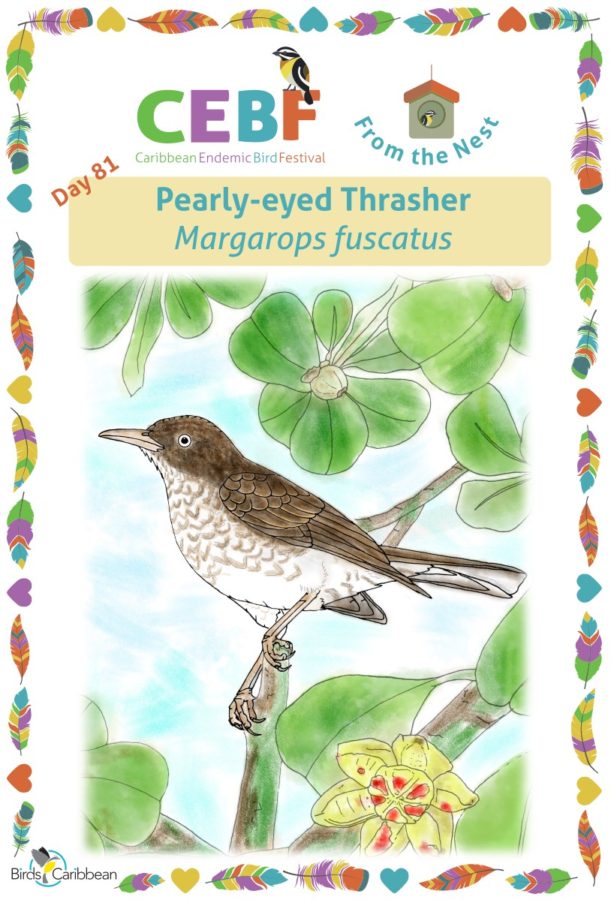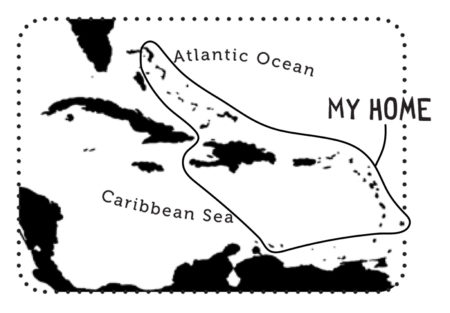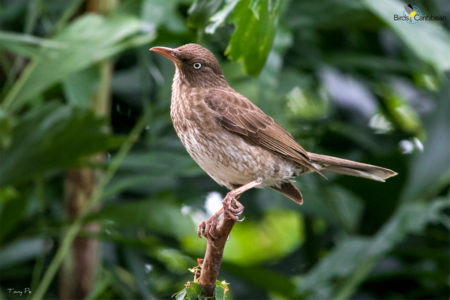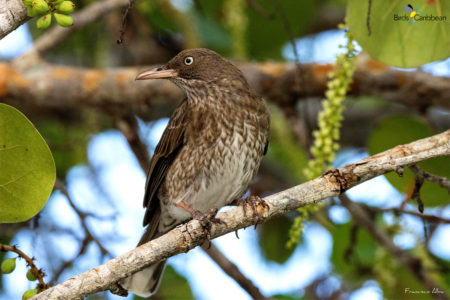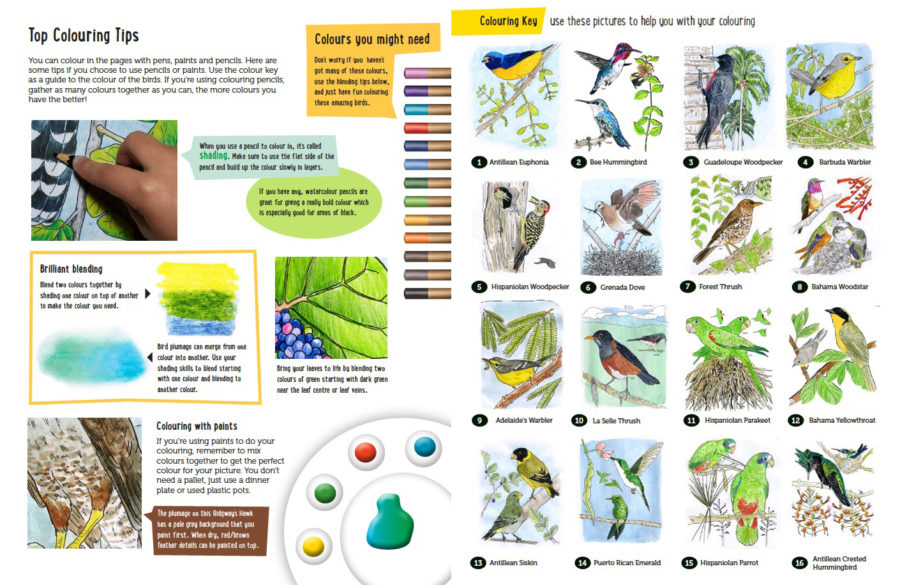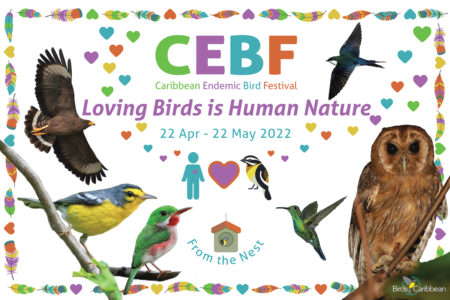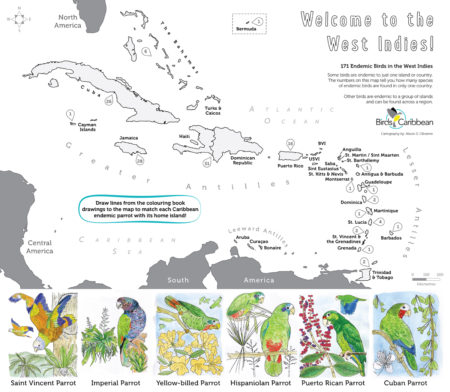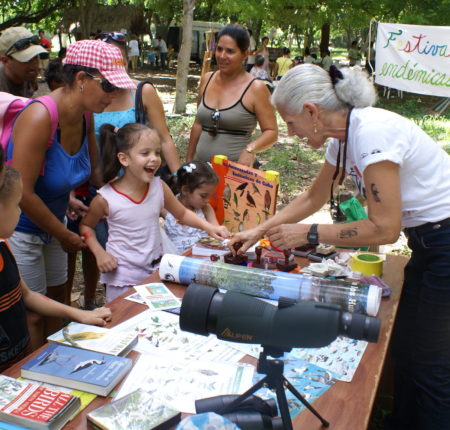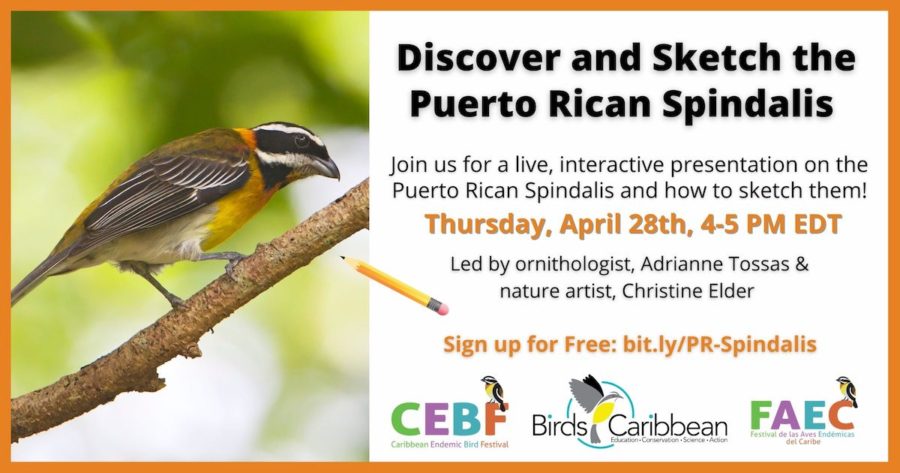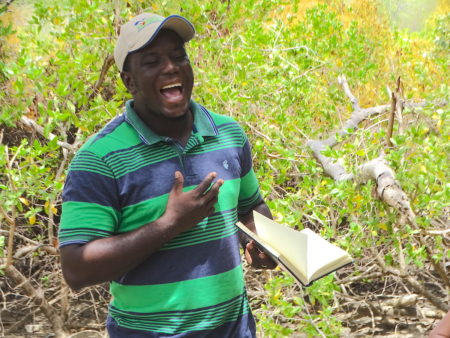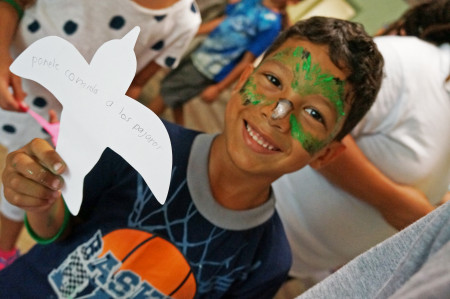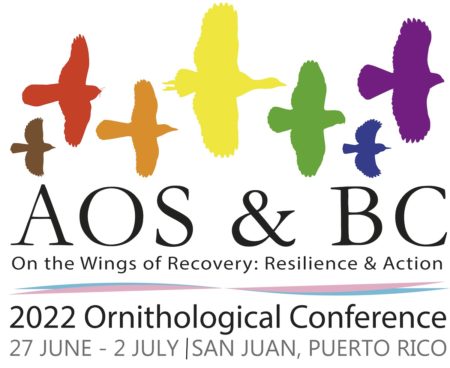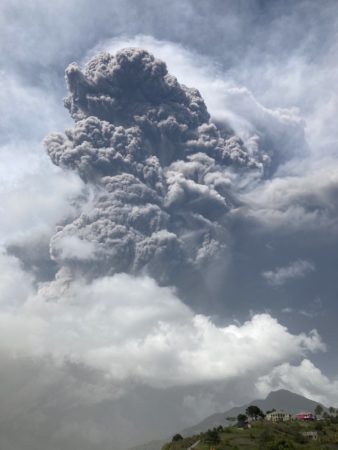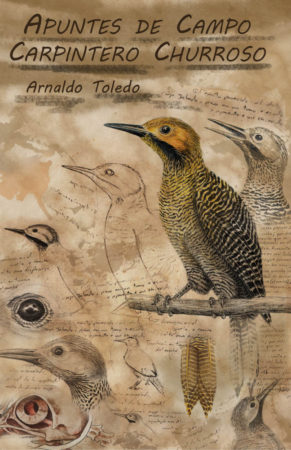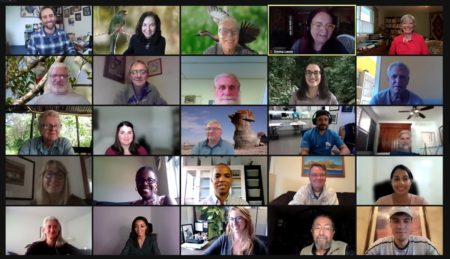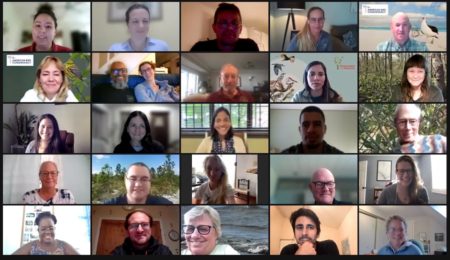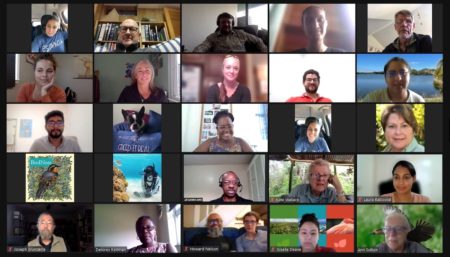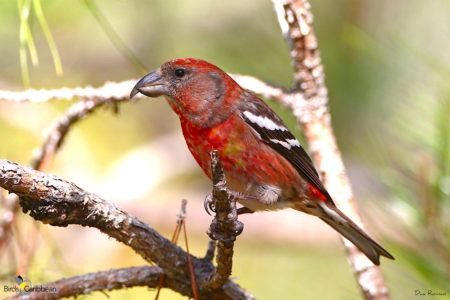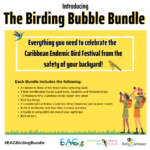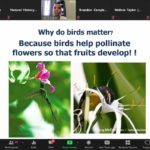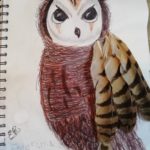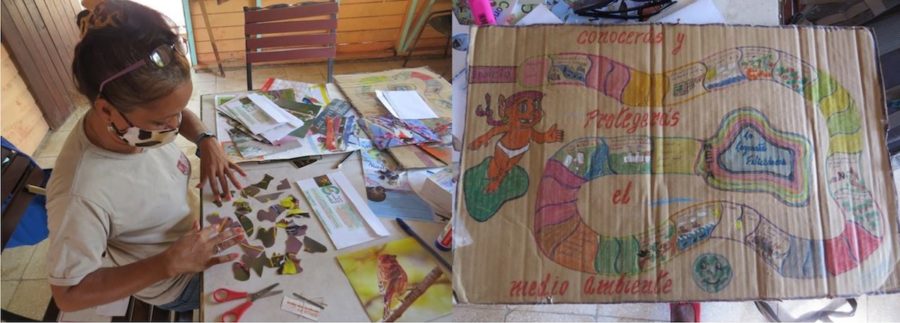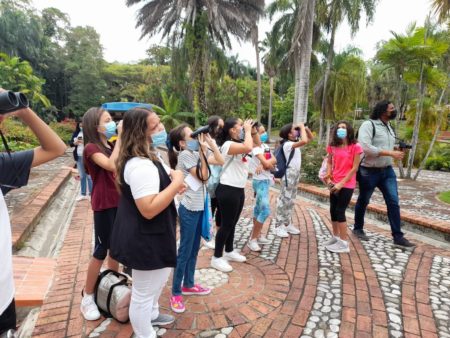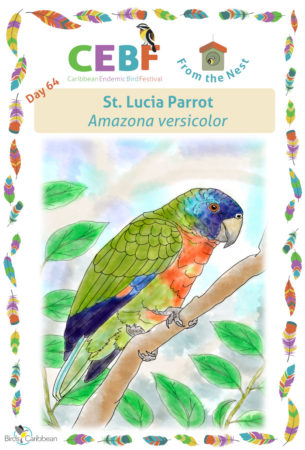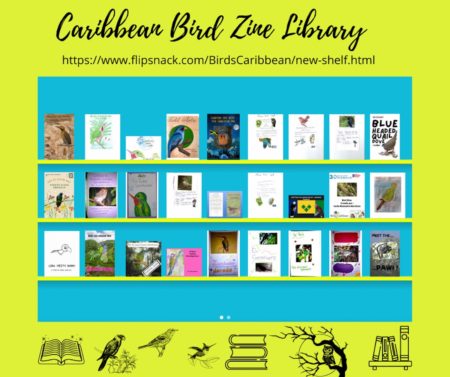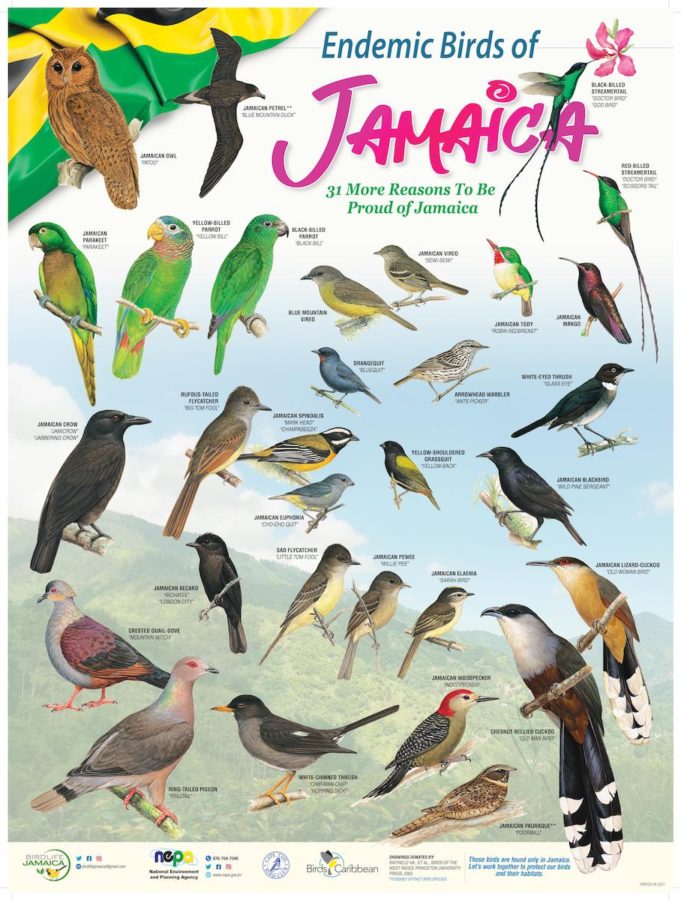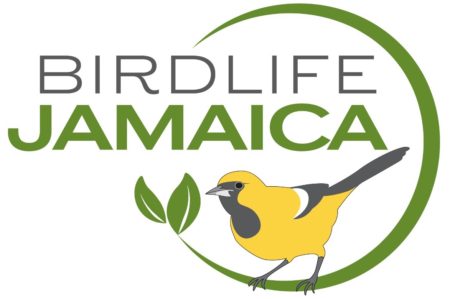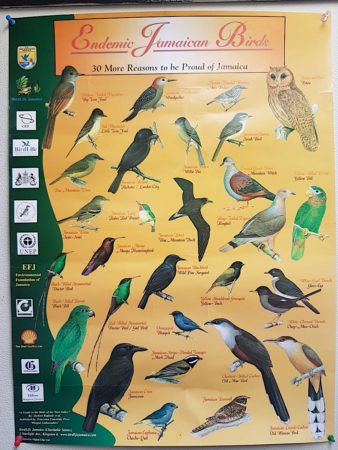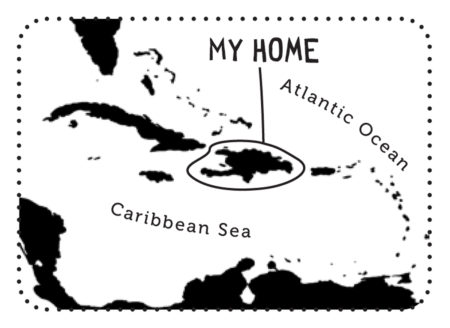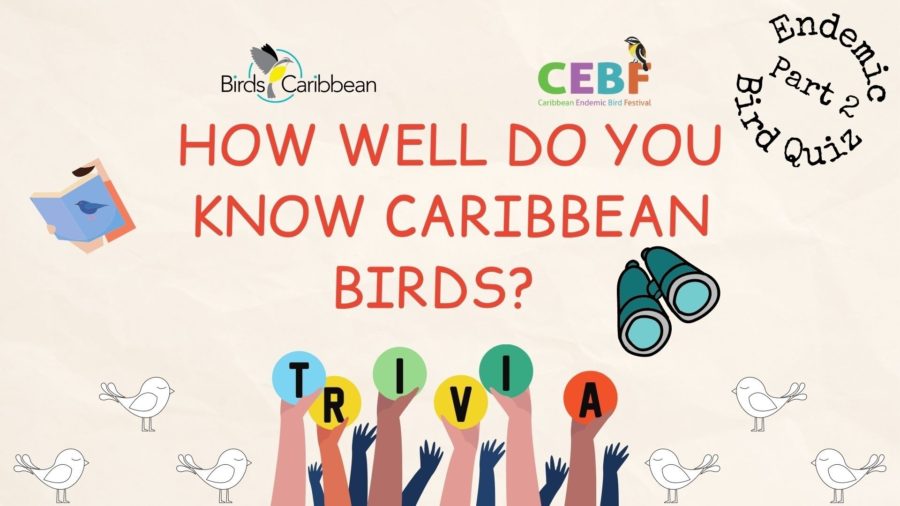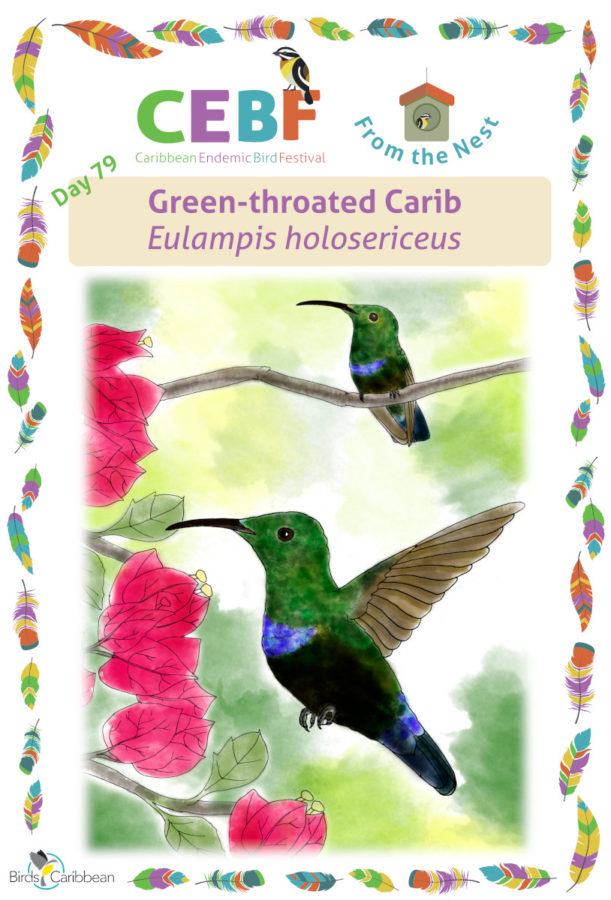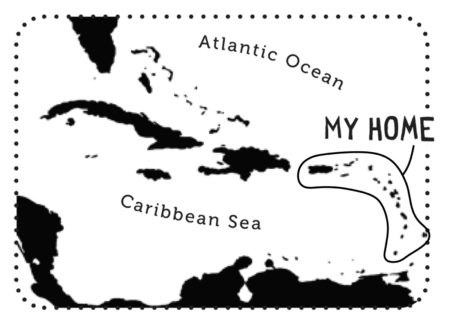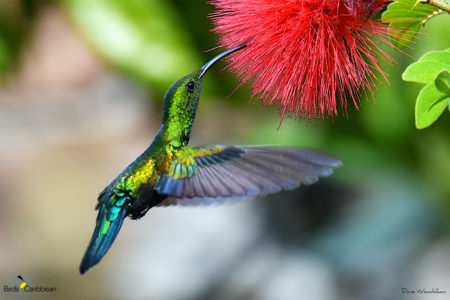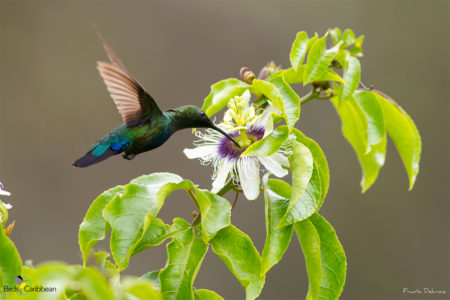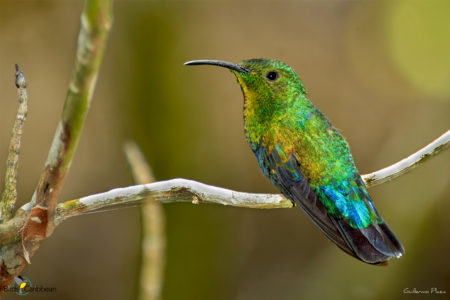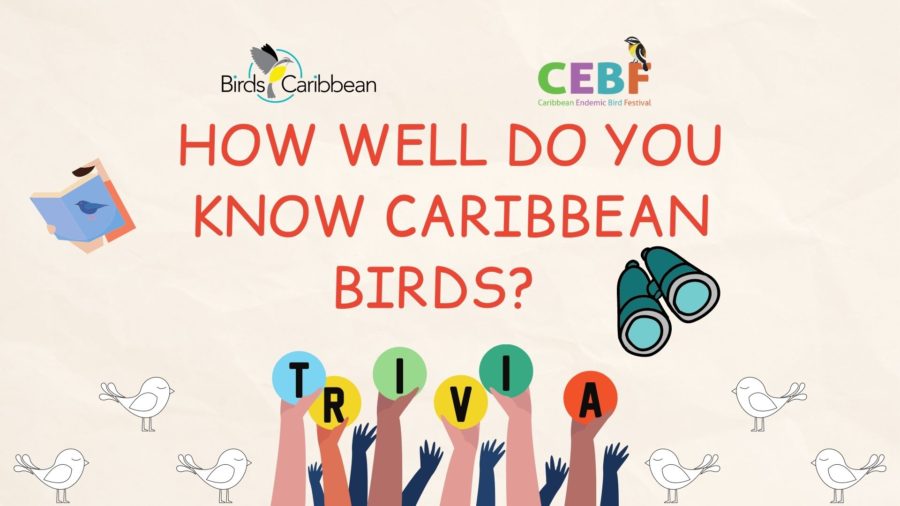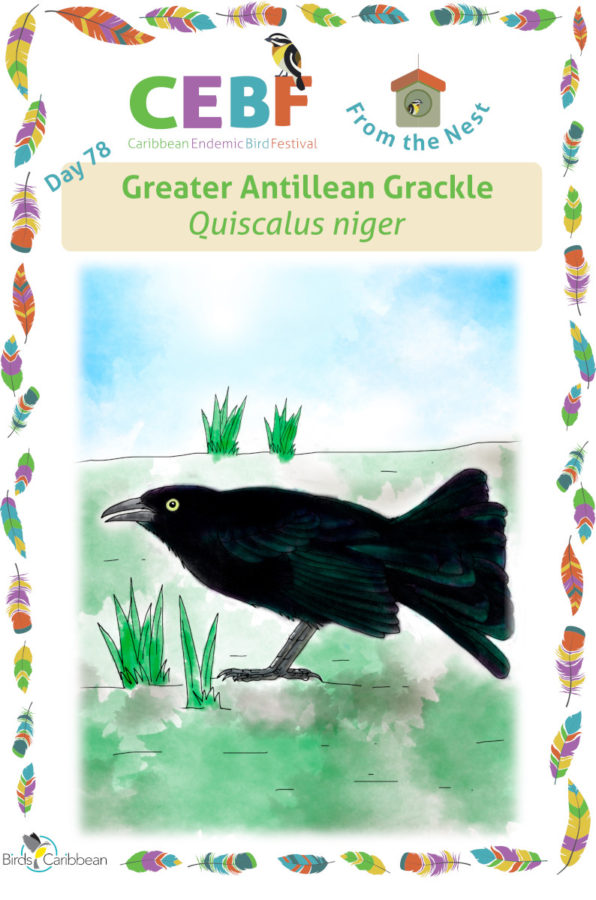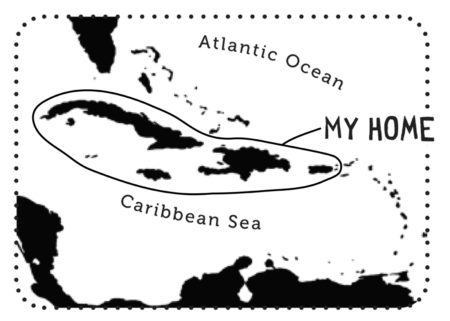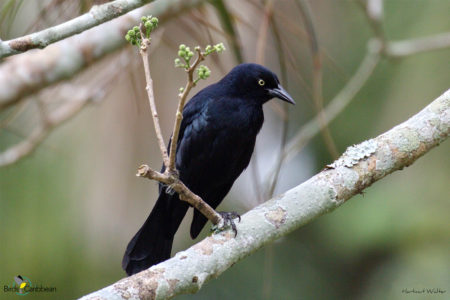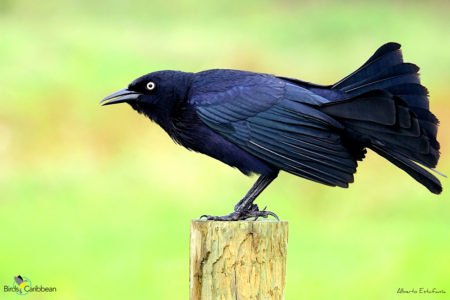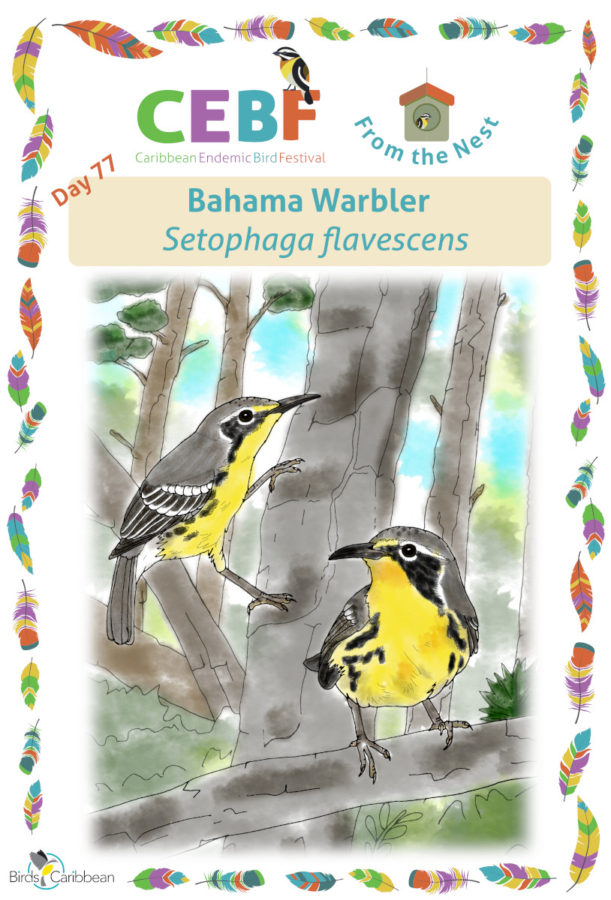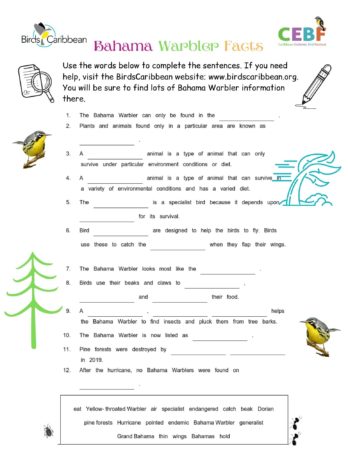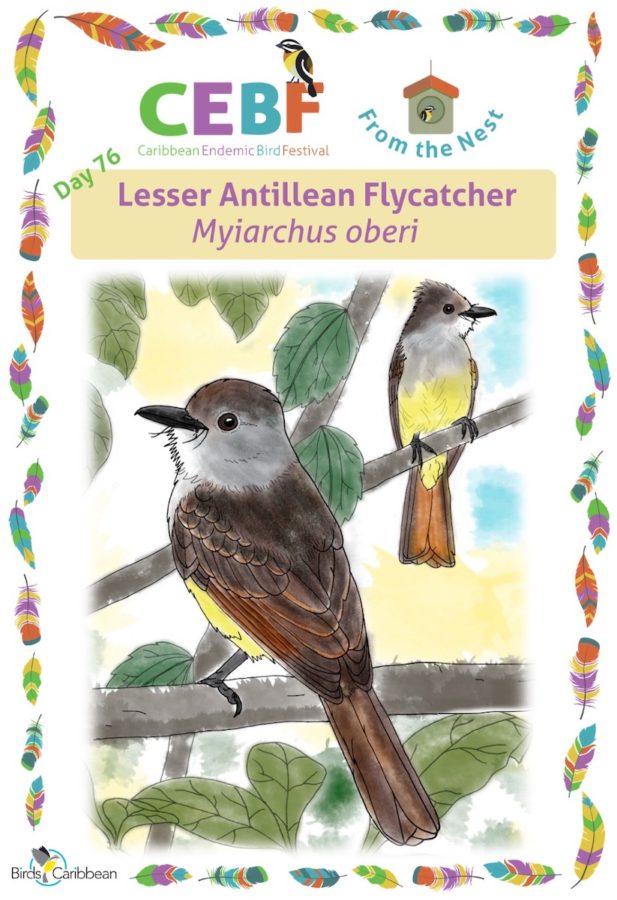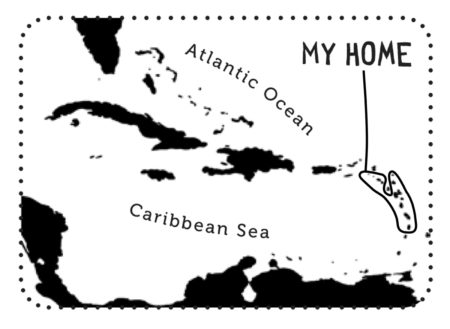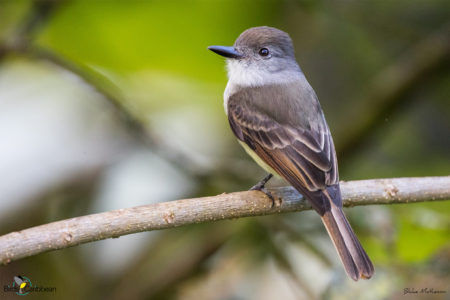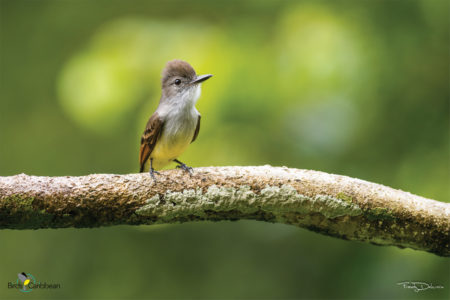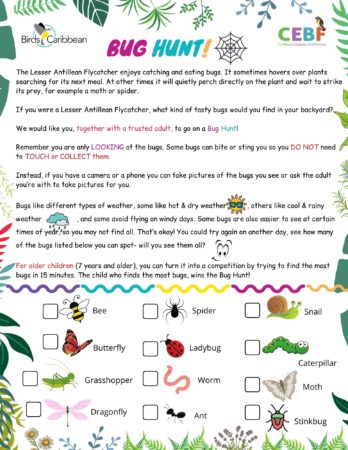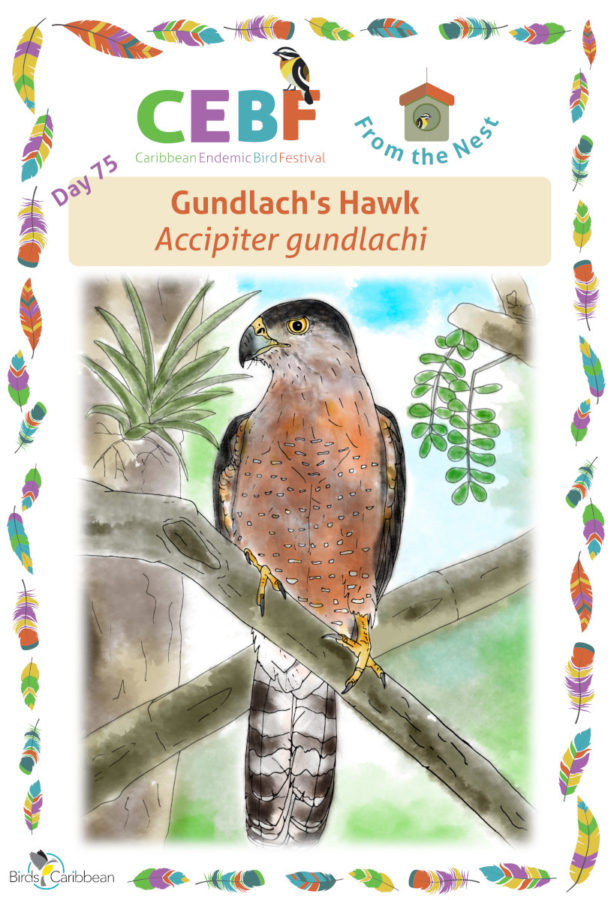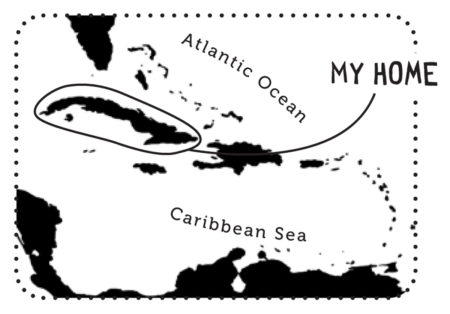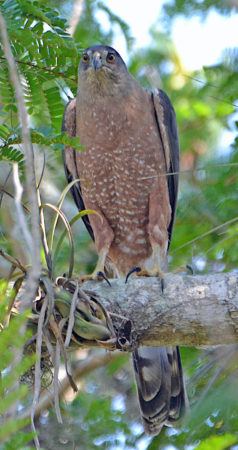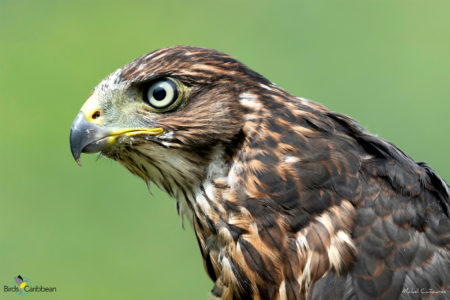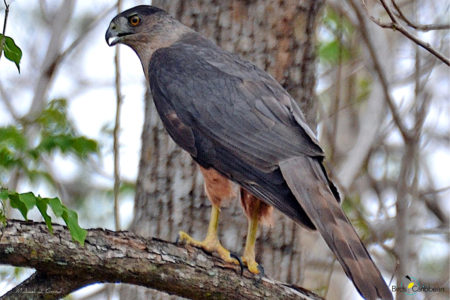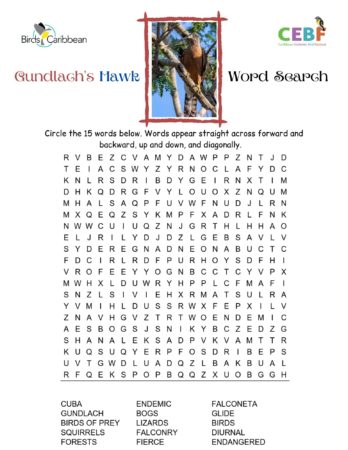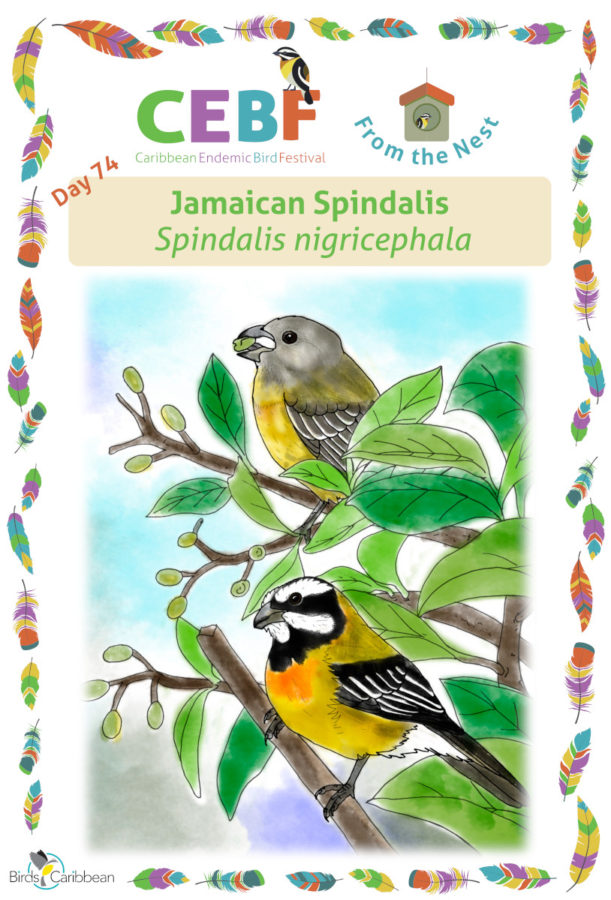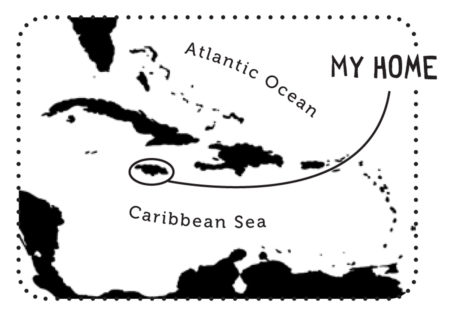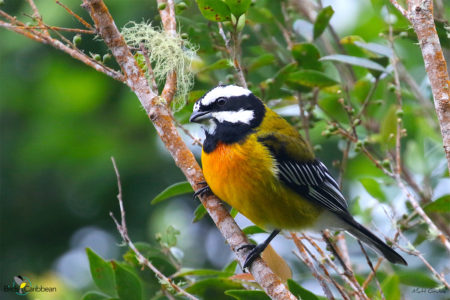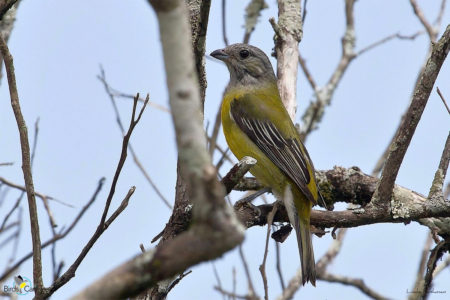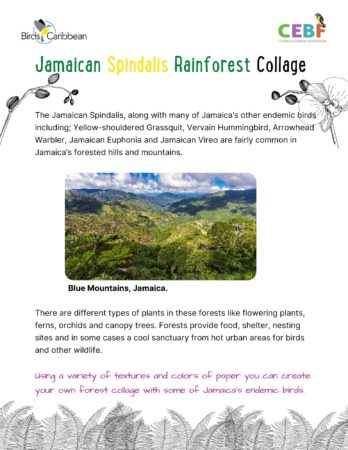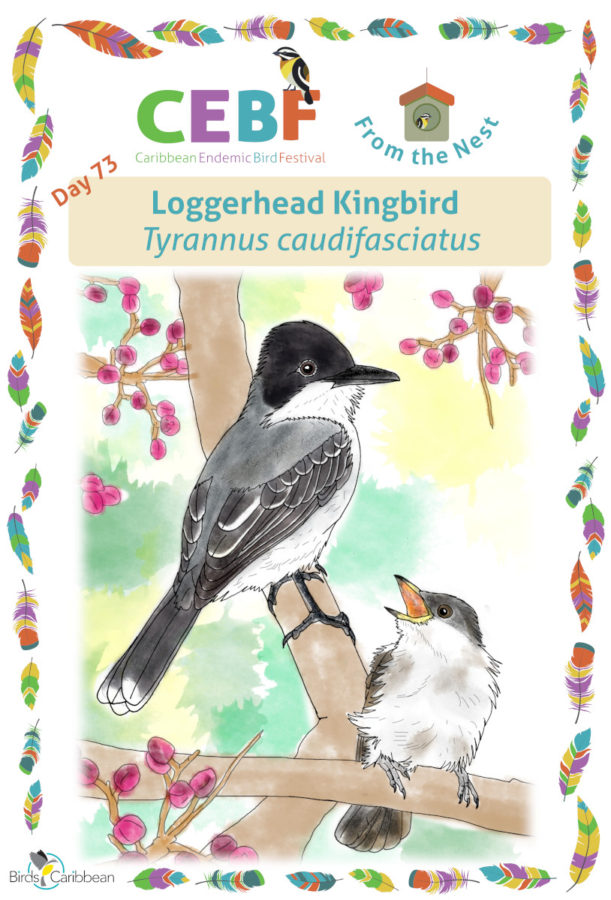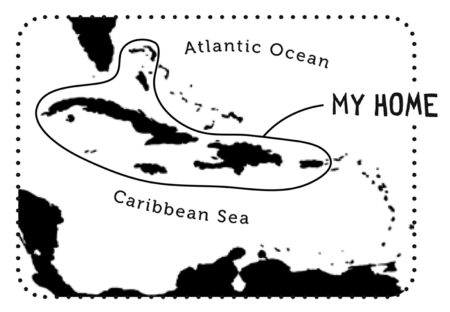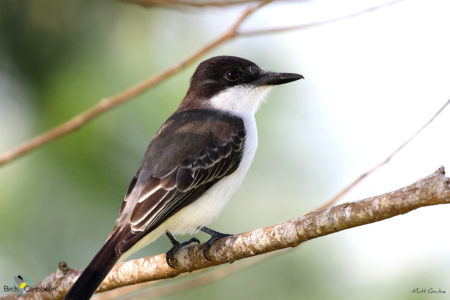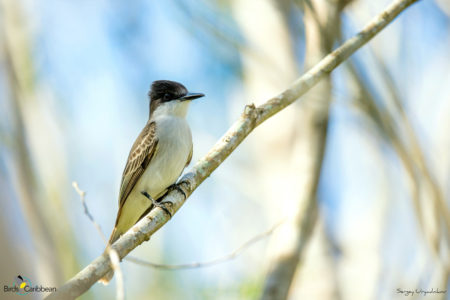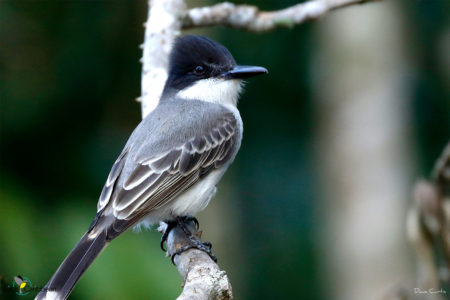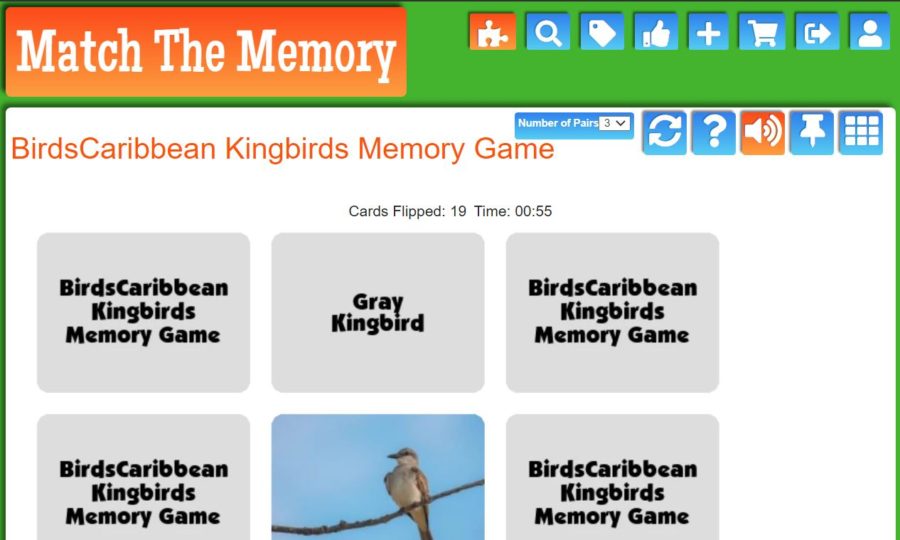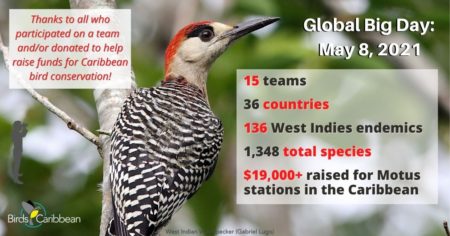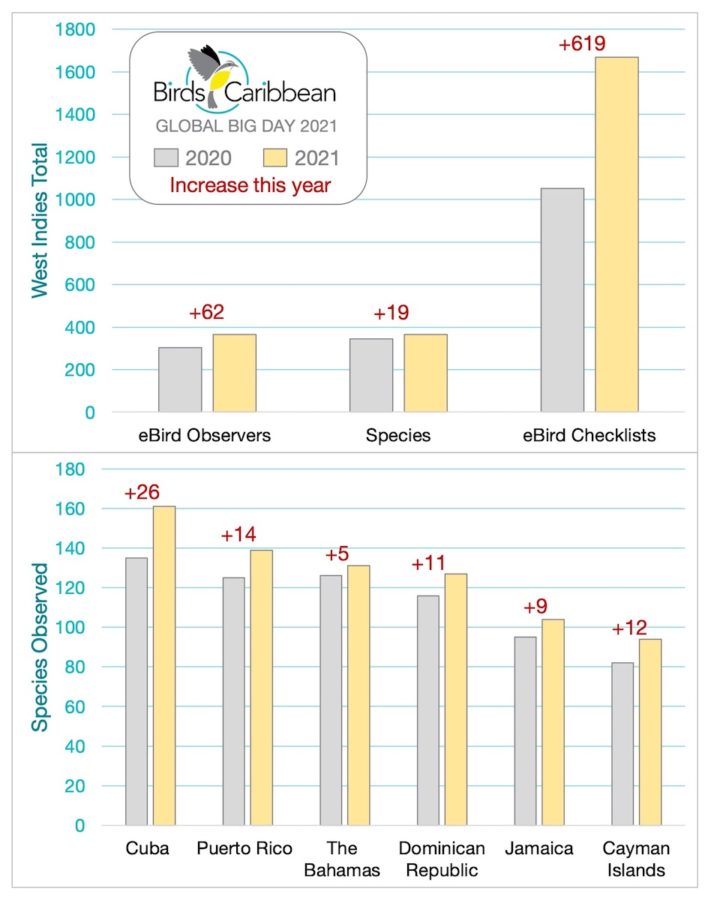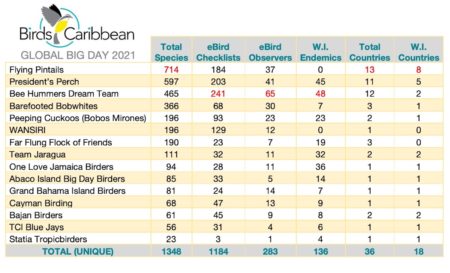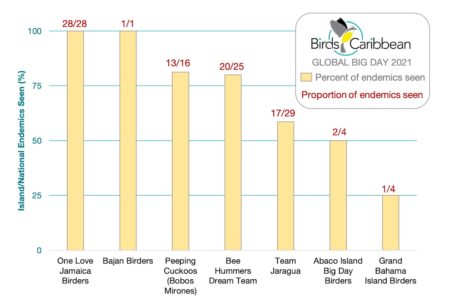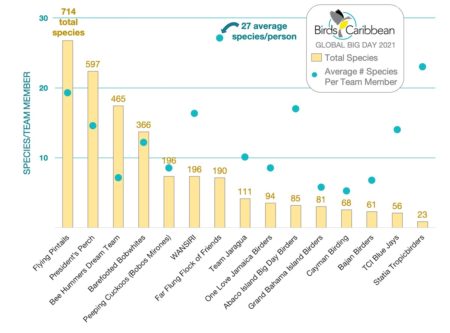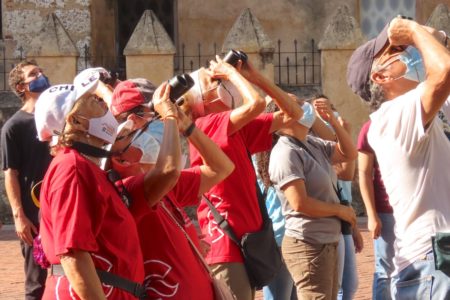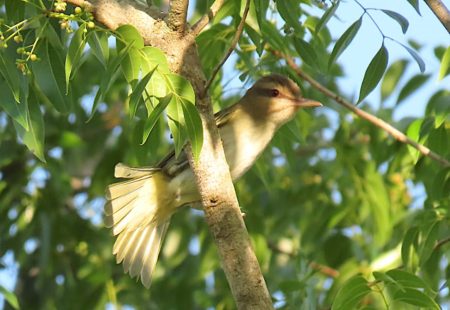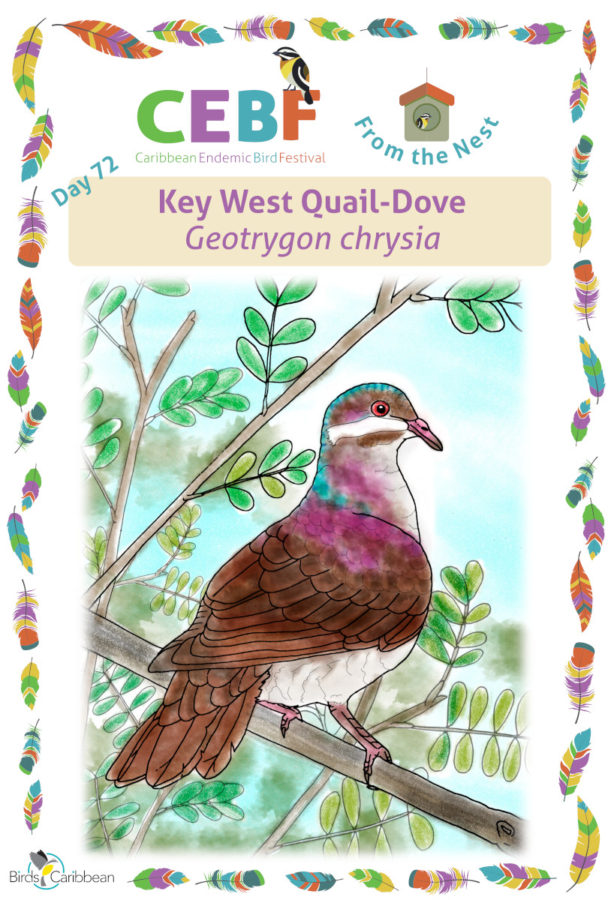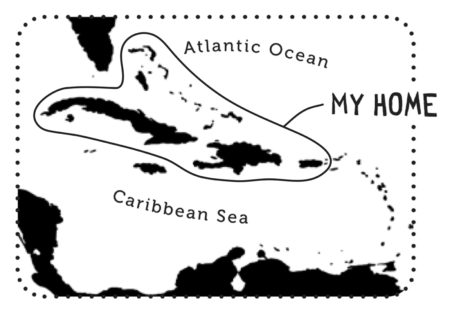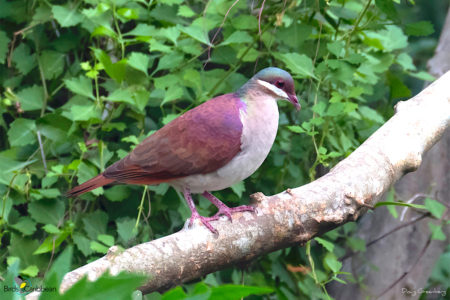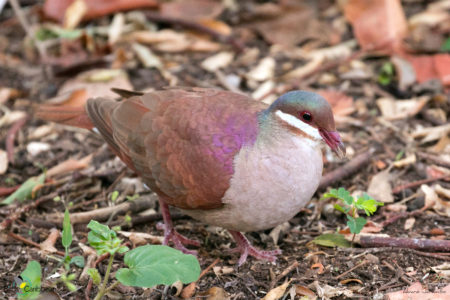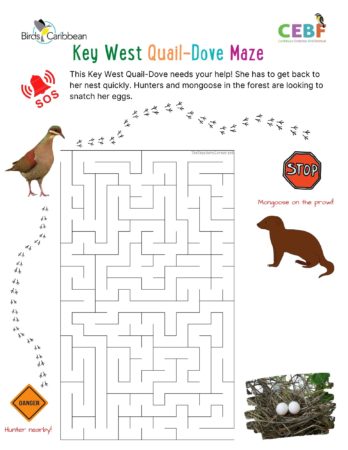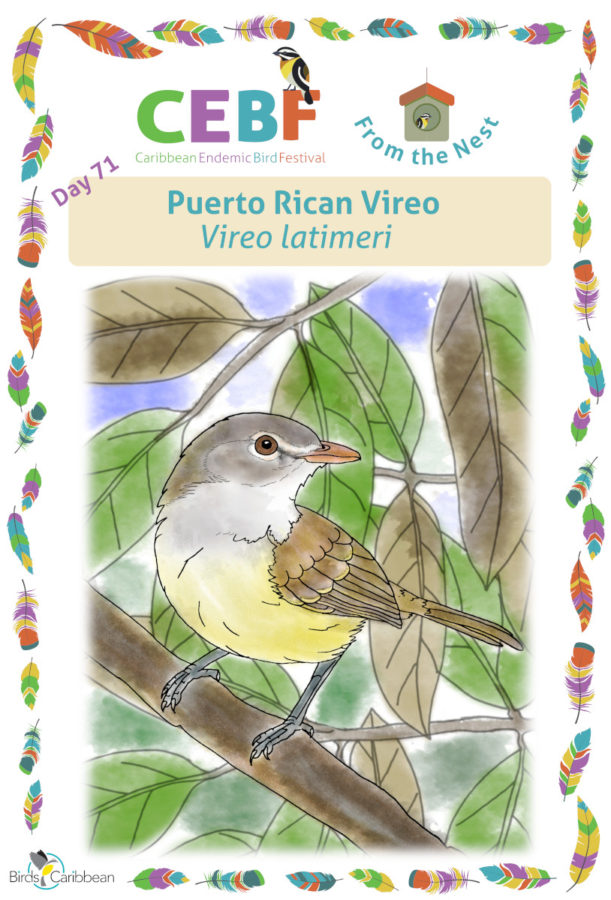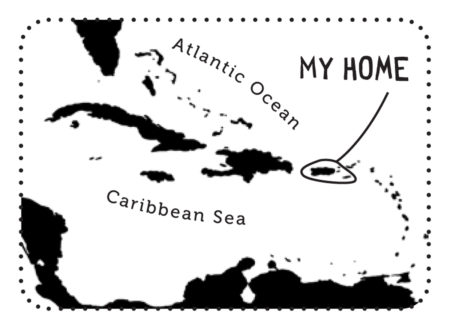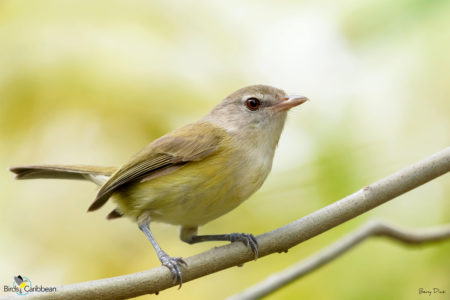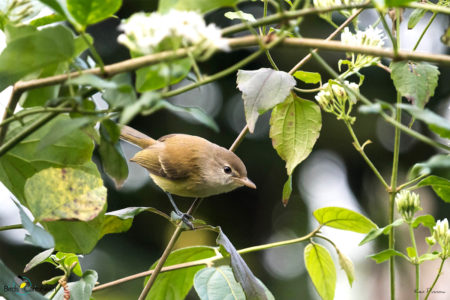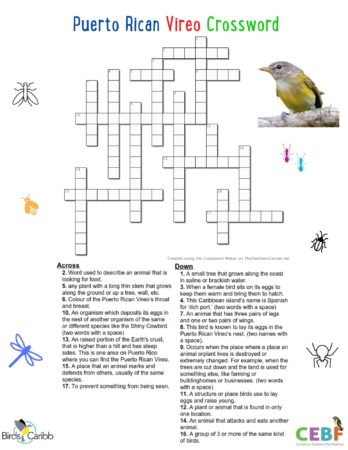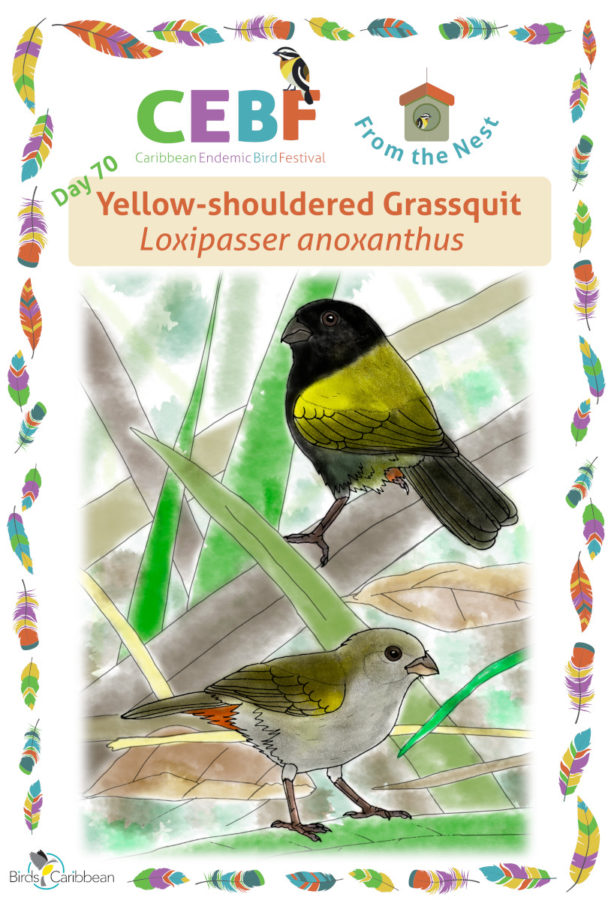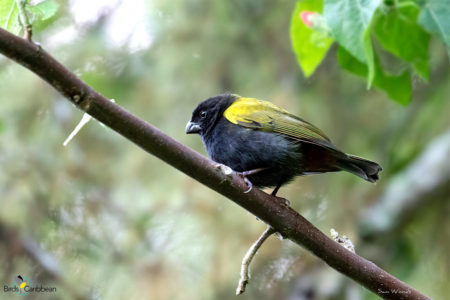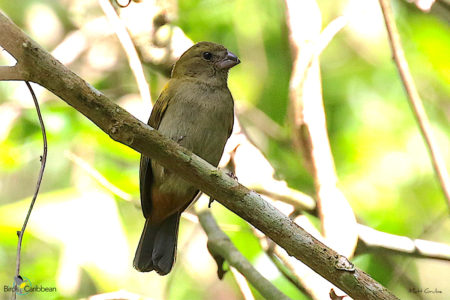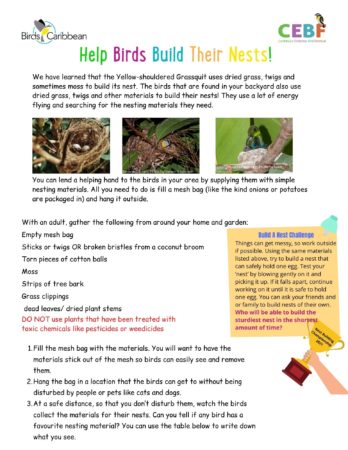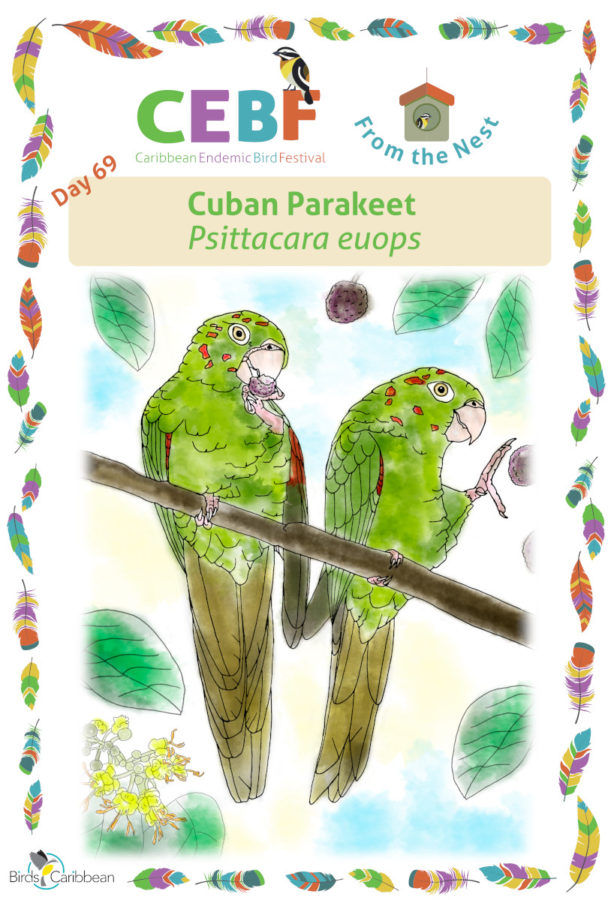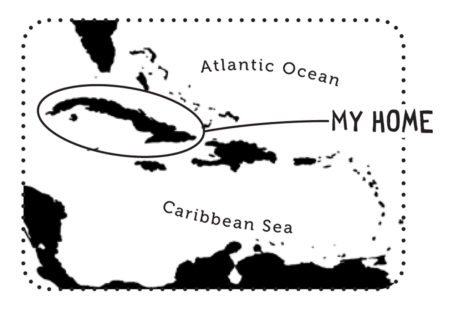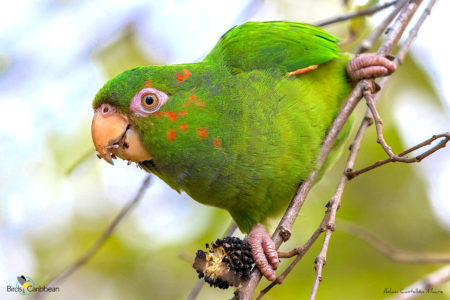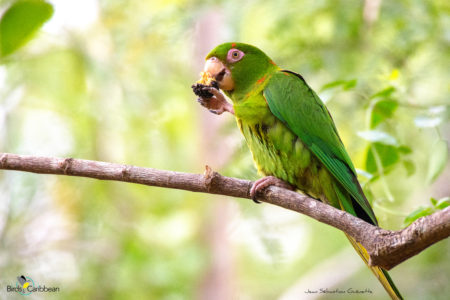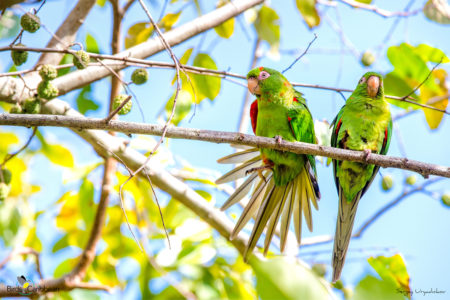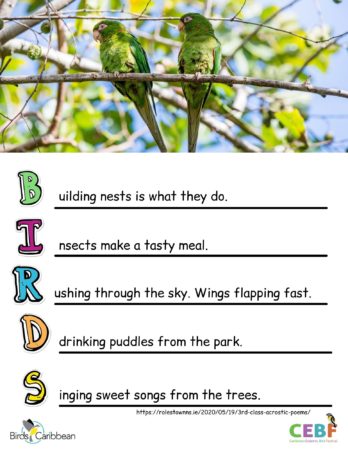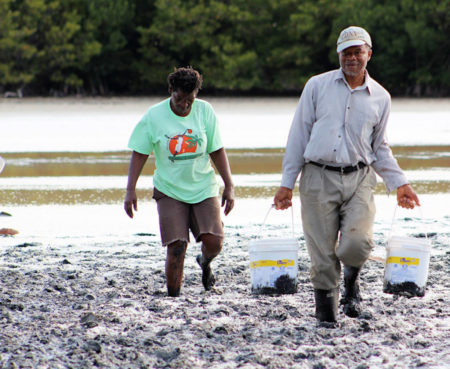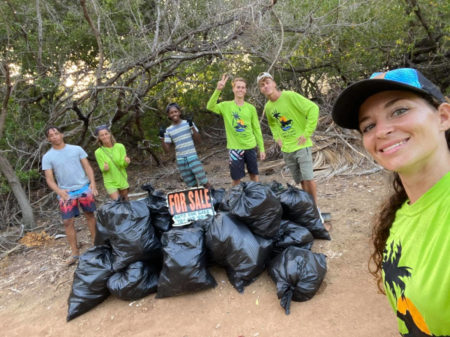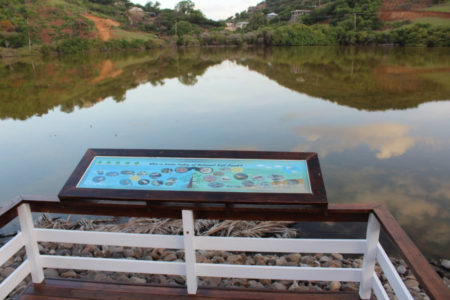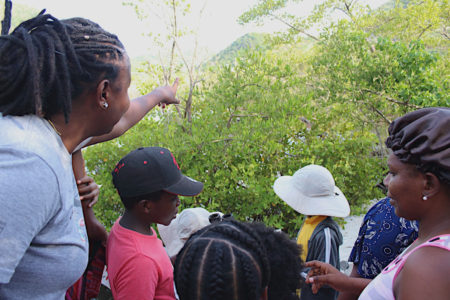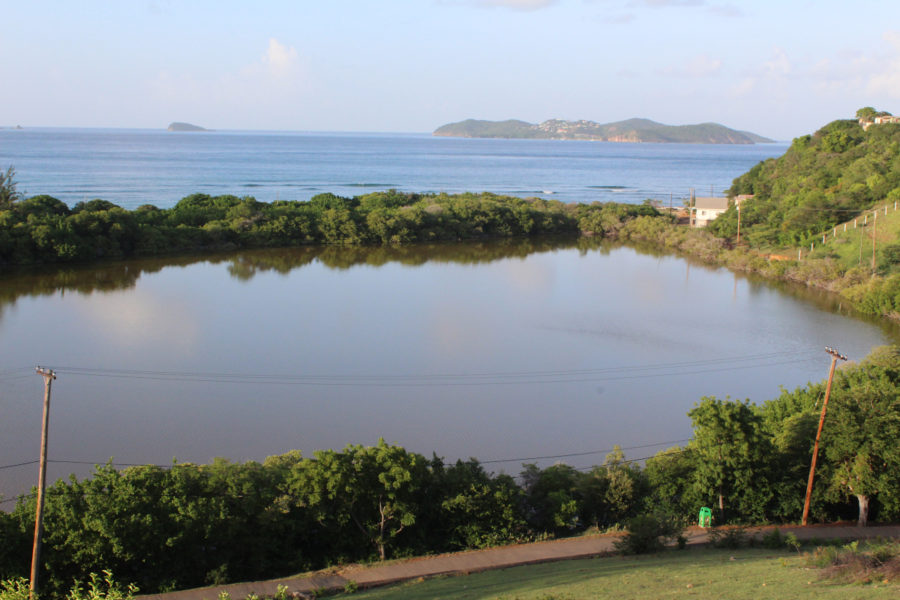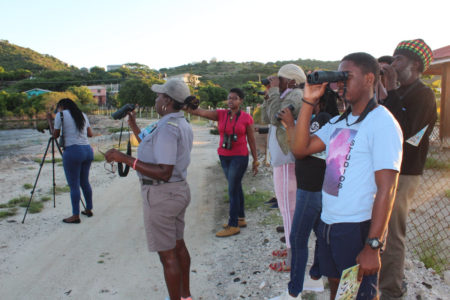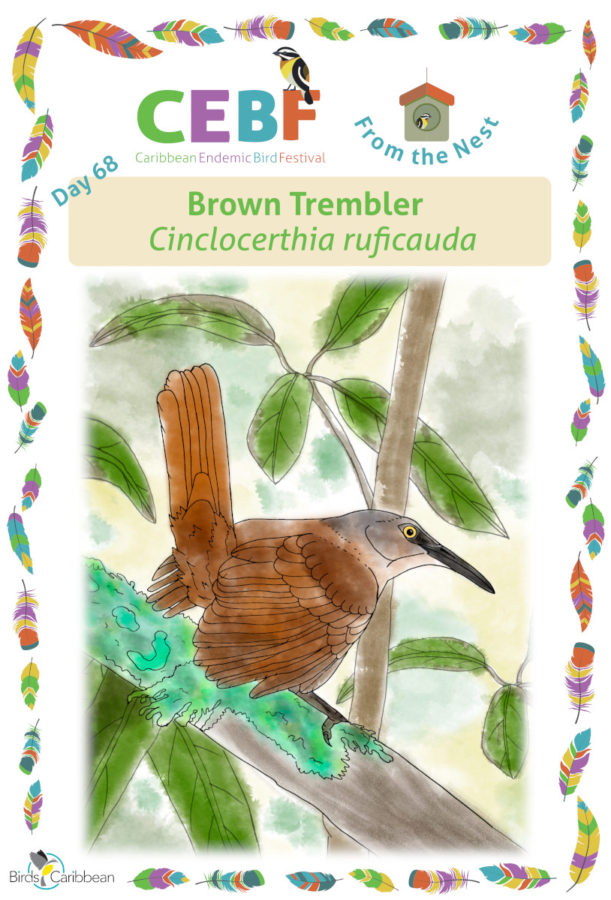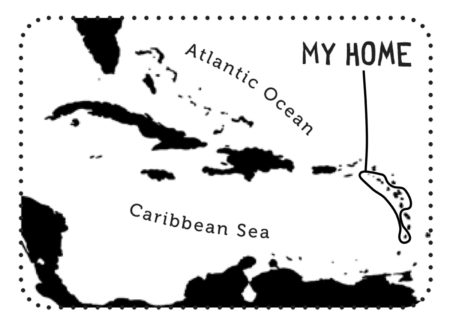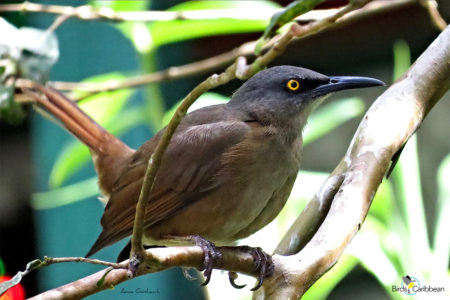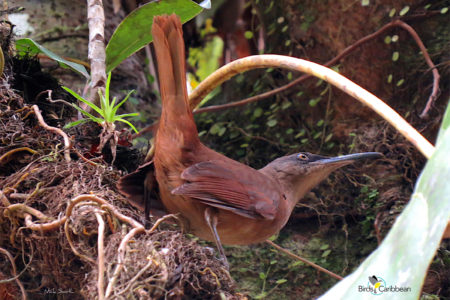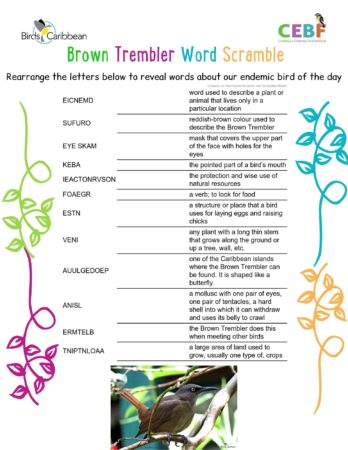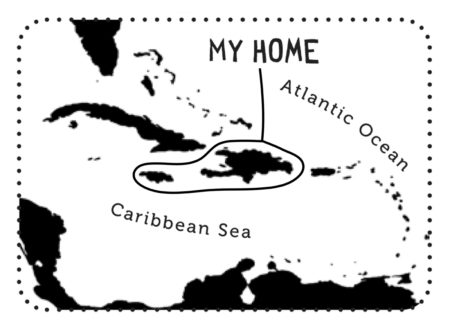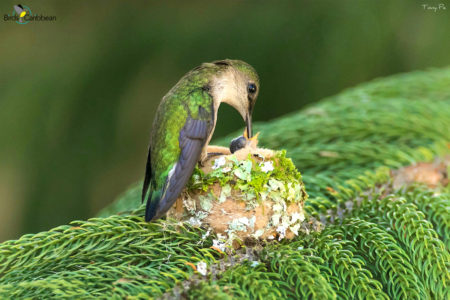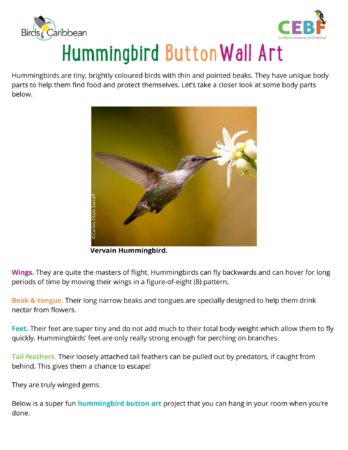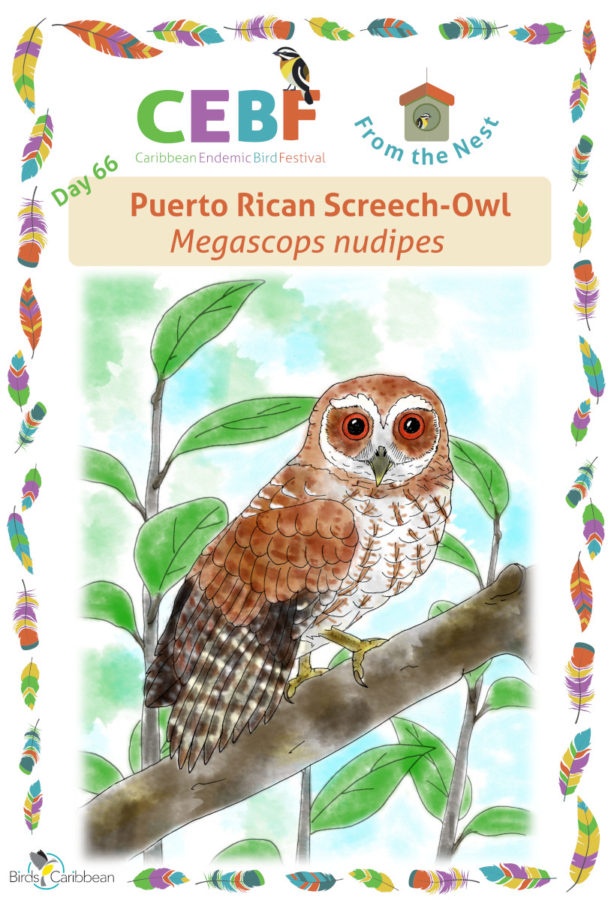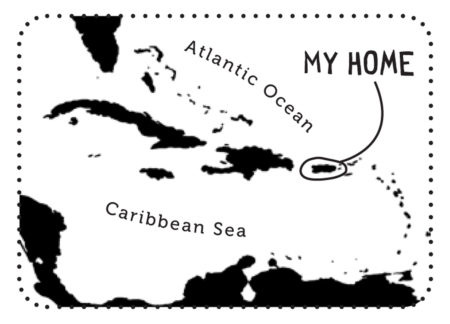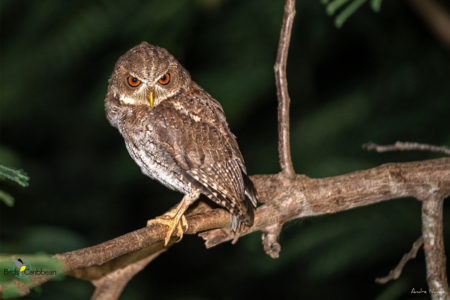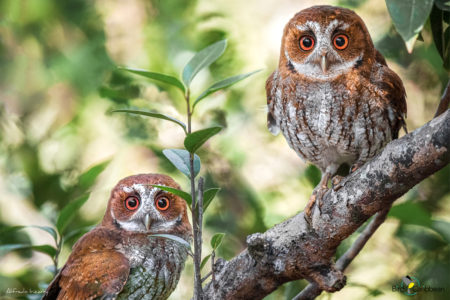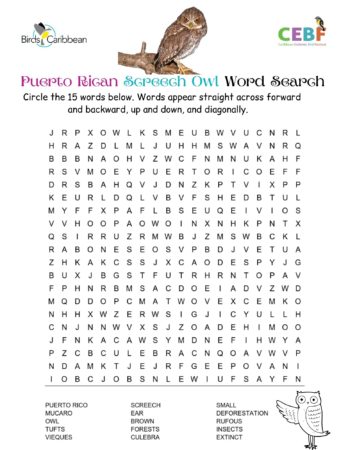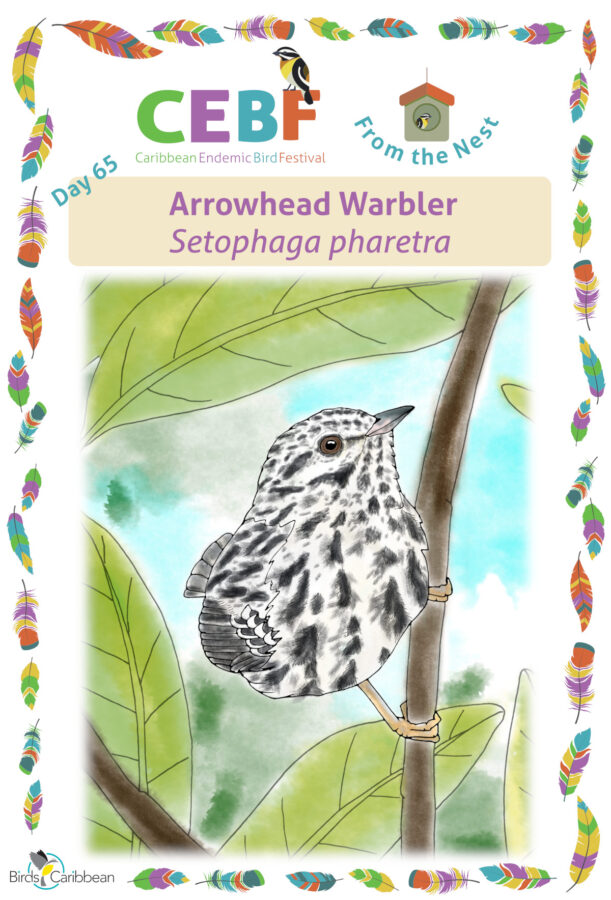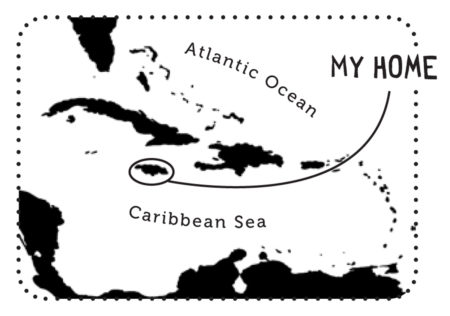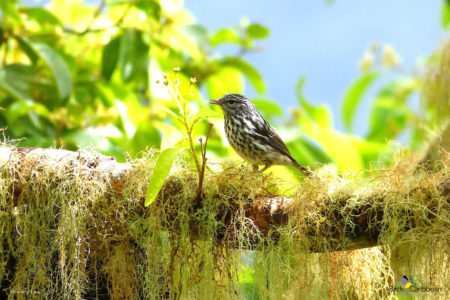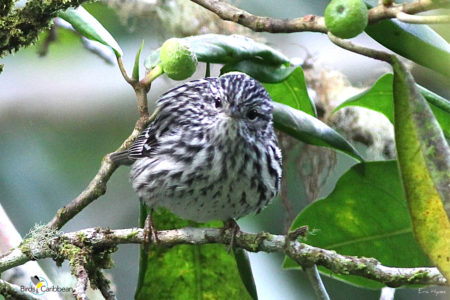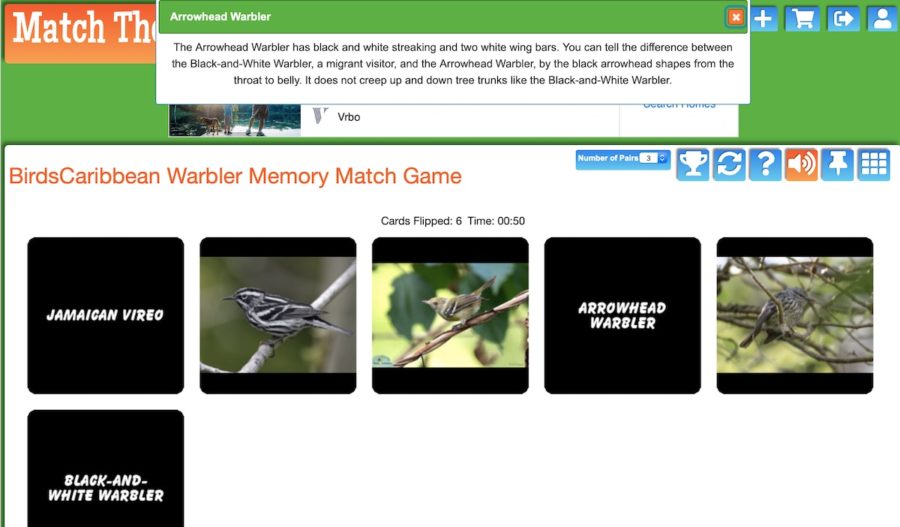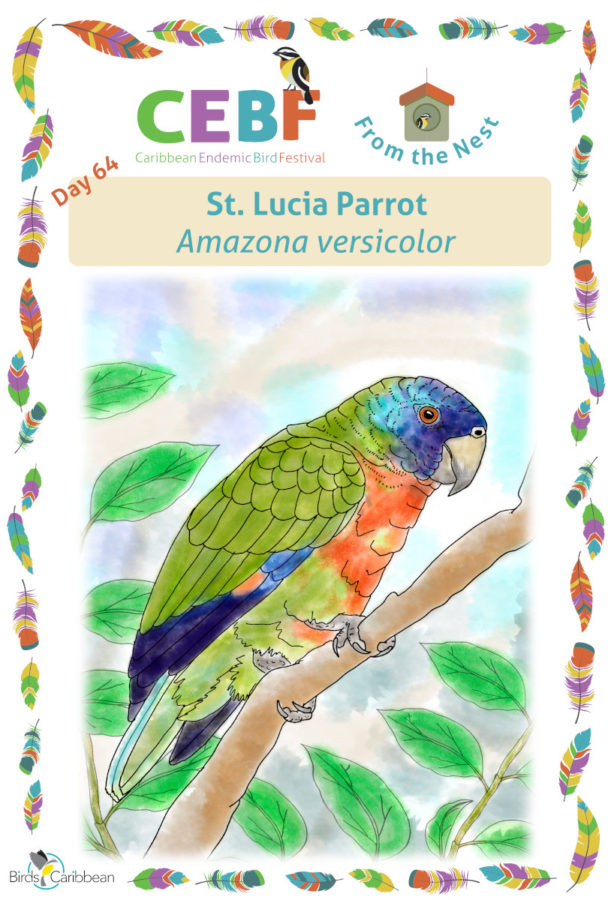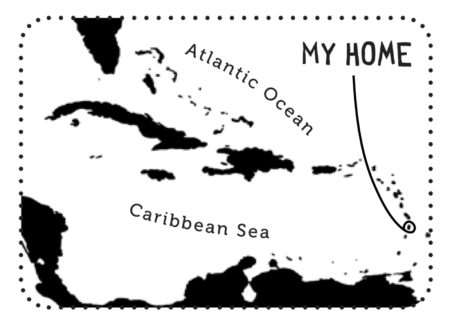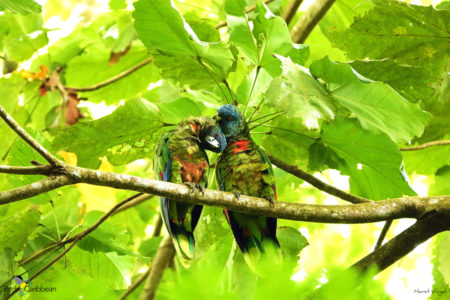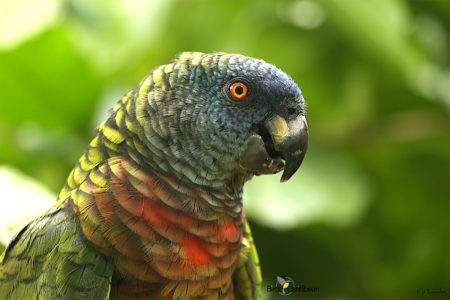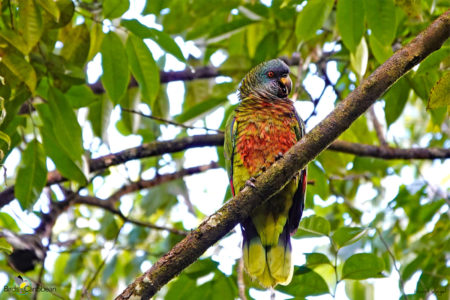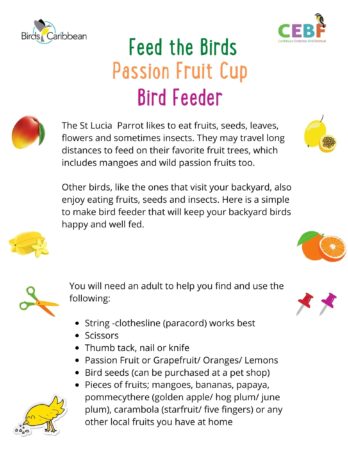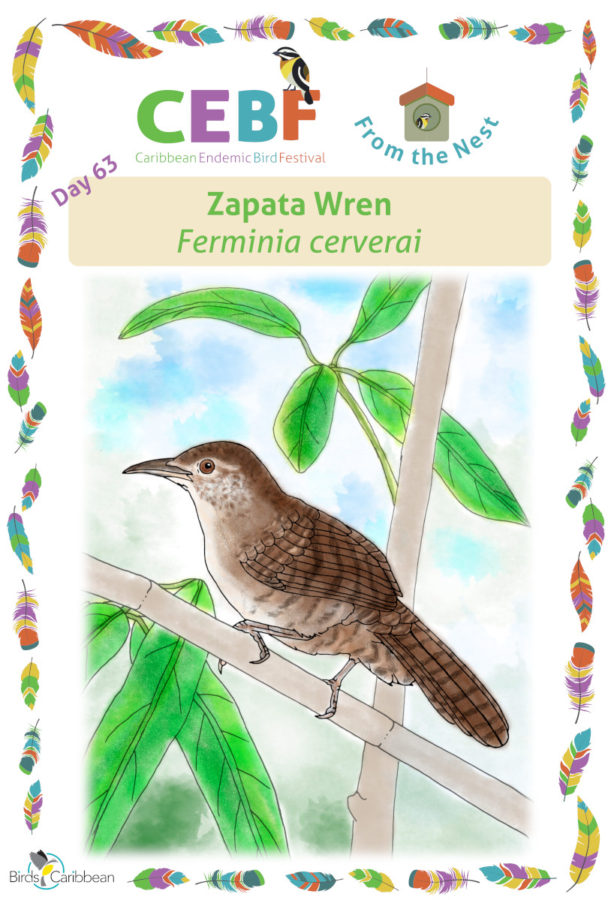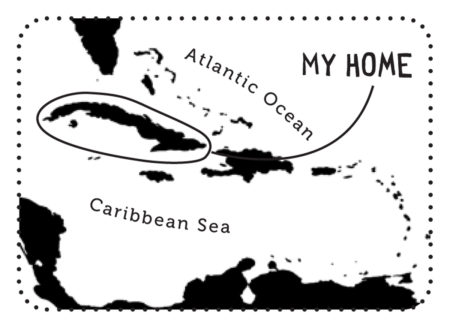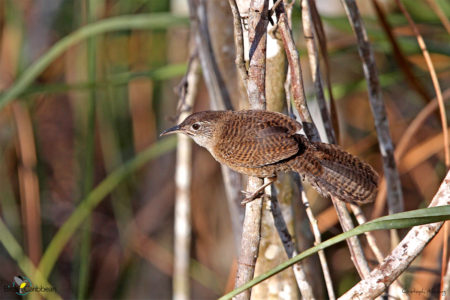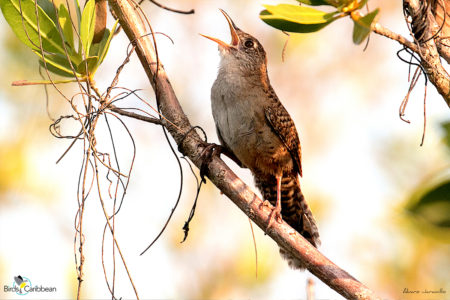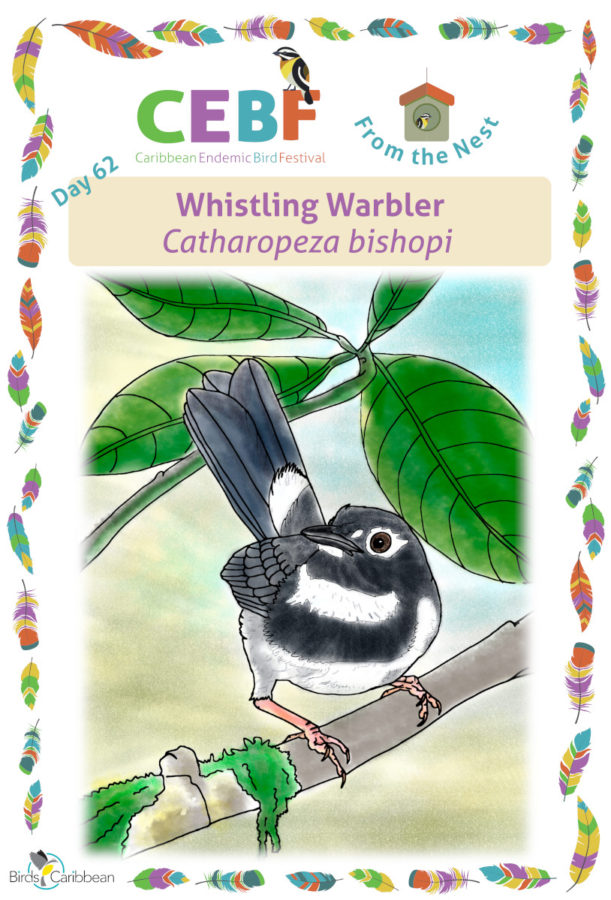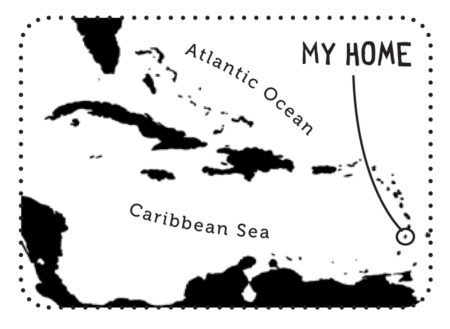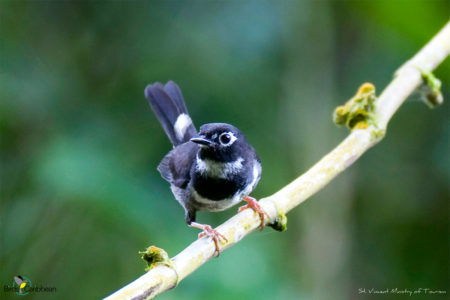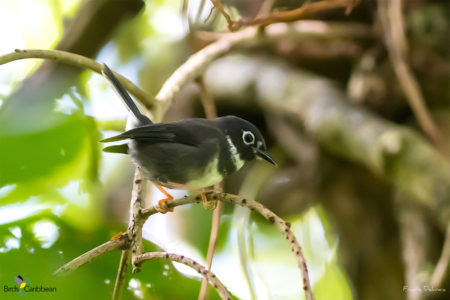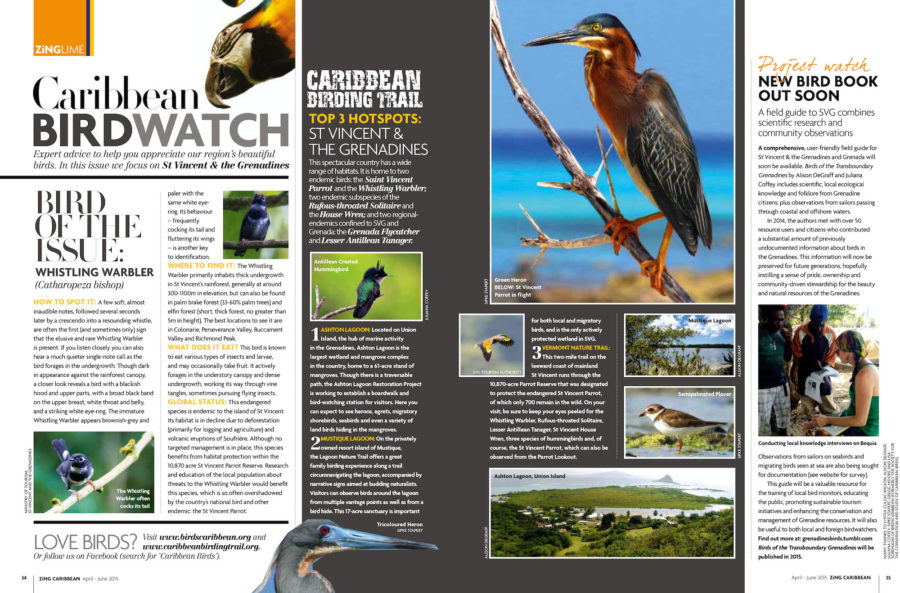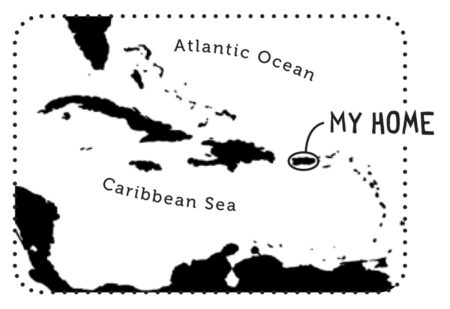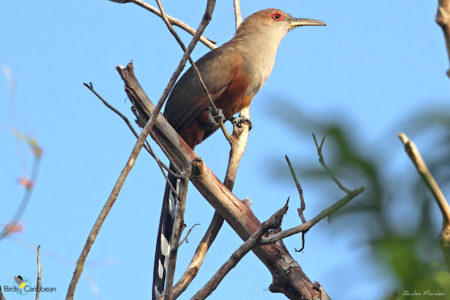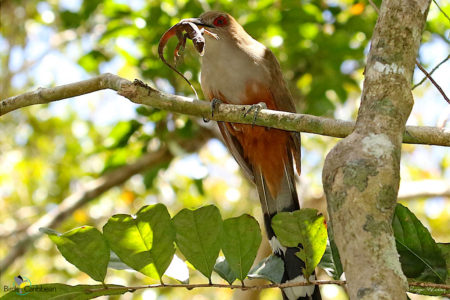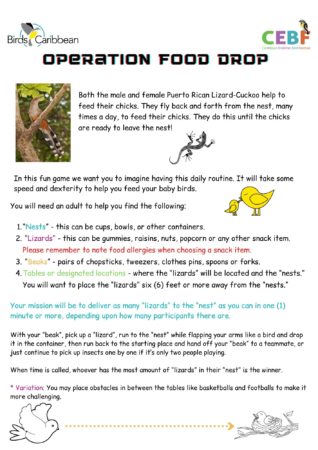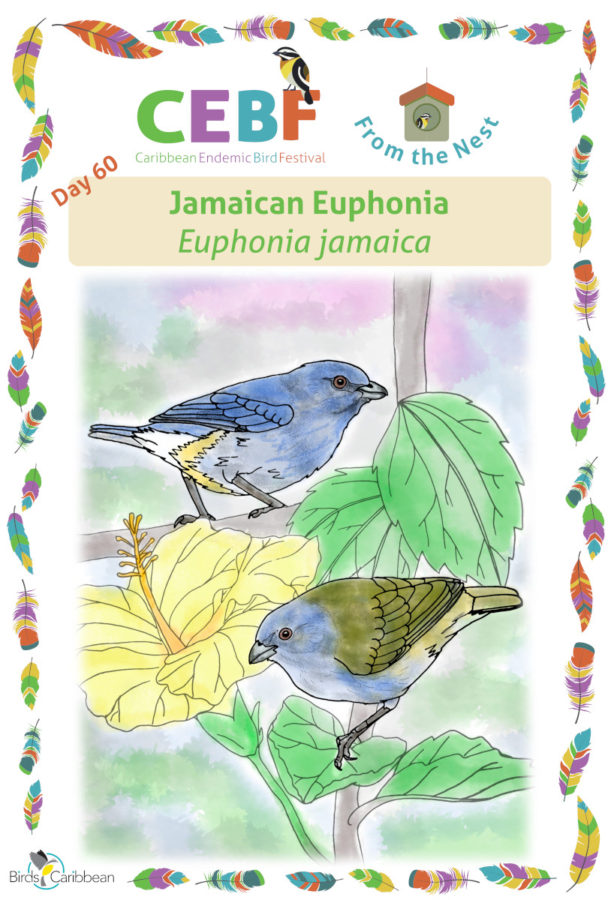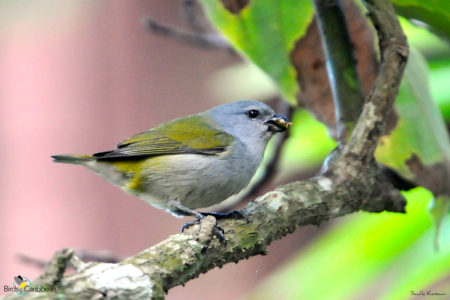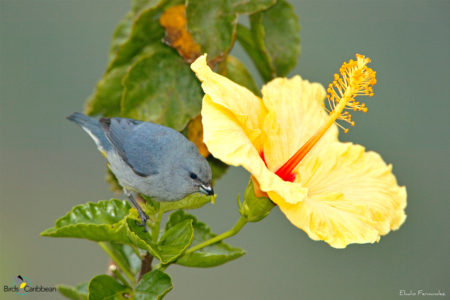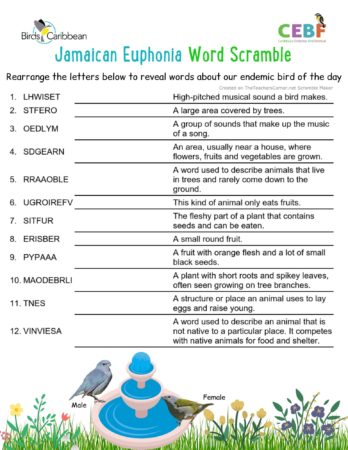A brand new Caribbean Endemic Bird Festival (CEBF) competition is here! Sharpen your pencil, polish your pen, hit the keyboard—we are hosting a Story and Poetry Competition! Storytelling is one of the great Caribbean traditions. Only a few would call themselves storytellers but we know everyone has a story to tell. We are calling on the Caribbean community to write about a unique, but factual, experience that you have had with a bird or birds that reflects our theme, Loving Birds is Human Nature. Lee las guías de la competencia en Español aquí.
It could have happened in your backyard, nearby park, garden, wetland, forest or anywhere! It could be about the first time you really noticed a bird and got hooked on birding, or about how birds have changed your life in some way, or an unusual or special encounter that you had with a bird. We’re looking for uplifting stories that express our connection to birds and nature and what your experience revealed to you personally. Featured stories and poems will be published in an electronic booklet, shared on our blog and social media and there will be prizes!
Prizes:
All winning poems and short stories will be published on the BirdsCaribbean website and awarded Amazon eGift cards. The top three poems and short stories will each receive gift cards in the amounts listed below (for a total of 6 prizes):
- 1st prize- $75
- 2nd prize- $50
- 3rd prize- $25
Need some help getting started?
Nature is often a source of inspiration for writers. If you can get outside to write a poem or true short story, by all means do! But even if you’re stuck indoors, tap into your memory to head back to a place and time where you had a memorable experience with birds in your backyard, neighborhood park, forests or wetlands.
Share this experience with us, through poetry or a true short story. It does not have to be profound but should allow readers an insight into your thoughts, feelings and surroundings. We hope to collect a variety of poems and stories about different birds throughout the region.
Judges will be looking for originality, voice, and a poem or story that holds the attention of the reader by making use of imagery.
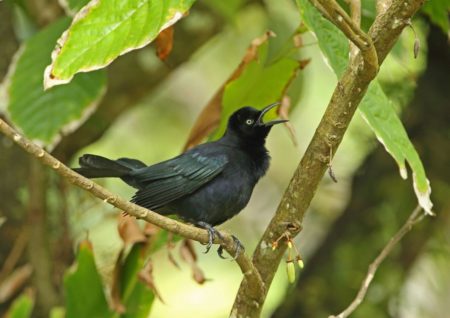
Important Dates:
Submission deadline for both poems and true short stories: Wednesday 25th May, 2022 at 11:59PM EST
Rules (General):
- The competition is open to any Caribbean national, aged 16 or over at the time of entering.
*We welcome submissions to the contest from all the insular West Indies including: The Bahamas, Bermuda, Turks and Caicos Islands, the Greater Antilles (Cuba, Hispaniola, Jamaica, Puerto Rico, the Cayman Islands), the Lesser Antilles, Trinidad and Tobago, Aruba, Bonaire and Curaçao.
Children and adults from other countries are most welcome to write and share their poems and short stories with us, to be included in the e-book, but only nationals from the countries/ islands listed above are eligible to be part of the contest.
2. Participants may enter ONE poem OR ONE true short story.
3. Works of fiction involving mythical creatures, alternate reality, superhuman powers etc., will be disqualified.
4. Submissions should be typed (Font: Arial, Font size: 12), single- spaced, titled and saved as a Word file.
5. Email submissions to info@birdscaribbean.org and copy Aliya.Hosein@birdscaribbean.org. Include your full name, age, country. Email subject: CEBF Poetry and True Story Competition.
6. Under no circumstances can poems and short stories be edited once submitted.
7. Submissions must not be published, self-published or published on a website or social media before Sunday, April 24, 2022.
8. The copyright of each submission remains with the author. However, by entering the competition, authors grant BirdsCaribbean permission to publish and/or broadcast their poems and true stories on the BirdsCaribbean website and social media and in an electronic booklet, produced by BirdsCaribbean.
Rules (Poems):
- Poems may be in English, Spanish or French.
- Poems can be written in any poetic style.
- All poems must have a title.
- Poems must be at least 10 lines and not exceed 30 lines in length (excluding title). Lines should not exceed 40 characters (including spaces between words).
- Poems must be entrants’ original work. Plagiarism is a serious offense and will result in immediate disqualification.
Rules (True Short Stories):
- Short stories may be in English, Spanish or French.
- All stories must have a title.
- Stories must be at least 450 words (1 page) and not exceed 1,000 words. Please check your word count. Submissions above the word limit will be disqualified.
- Short stories must be entrants’ original work. Plagiarism is a serious offense and will result in immediate disqualification.
We will accept photos and artwork of birds, natural areas, and communities featured in both poems and short stories. They may be original work or participants must obtain permission to use the photos and/or artwork. However this is completely optional and will not be used during judging. Therefore they must be emailed as separate attachments.
Participants are also encouraged to share with us an audio recording of their poems and stories. The recordings are completely optional and will not be used during judging. All that is needed is a smartphone or laptop capable of recording audio.
All suitable submissions will be shared after the CEBF 2022 on the BirdsCaribbean website and social media accounts, in addition to an electronic booklet.
Guidelines and Tips for Creating a Recording of Your Story or Poem (optional)
Instructions for content:
- Have fun! Remember this is not a school project or work assignment.
- Speak in your native language; if possible, please send us the English script (if English is not your first language).
- First, introduce yourself: your name and where you’re from.
- Then, let us know how birds inspire you.
- Finally, recite your poem or short story.
Instructions for your audio recording:
- You can use a smartphone or tablet to record your audio.
- Record your audio in a quiet room
- Please try to keep your recording under 10 minutes.
- Use headphones to listen to your audio recording. This will help you to hear any other noises the device picked up during the recording like mic pops, room noise or echo.
- Audio recordings must be sent in one of the following formats: MP3, M4A or AAC
Recordings must NOT contain:
- Copyrighted material (such as music tracks) without the necessary authorizations.
- Material that is inappropriate, indecent, obscene or hateful.
Instructions for sending us your recording:
- Email audio file, consent form (if needed), and English script (if needed) to Aliya.Hosein@birdscaribbean.org.
- For adults, by submitting a recording you give BirdsCaribbean consent to use the file for purposes specified above.
- For those under the adult age in your country, the minor’s audio recording must be accompanied with a consent form signed by a parent or guardian – download the form here.
